
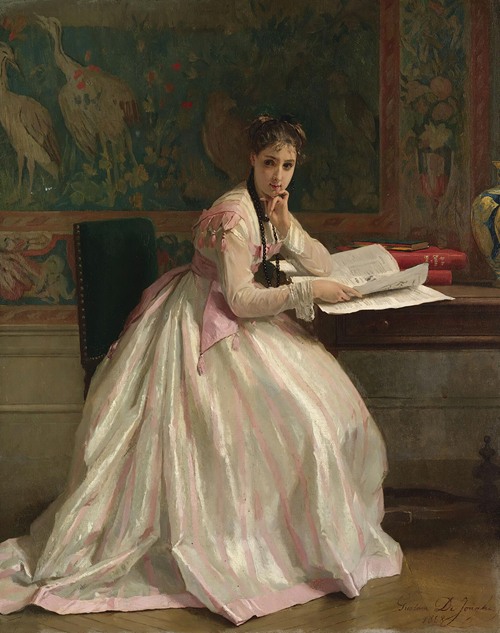
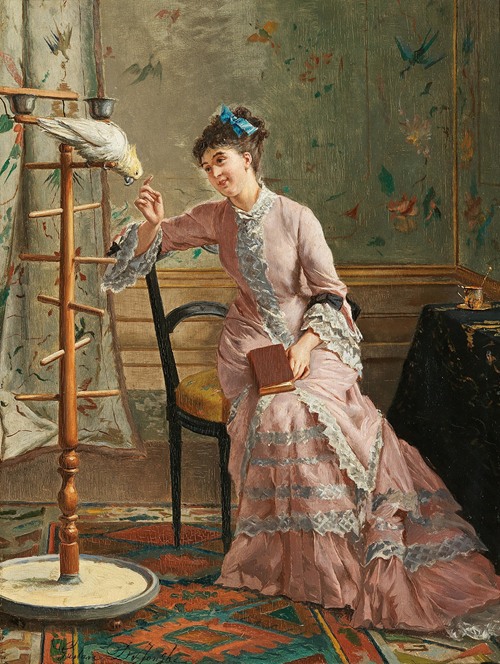
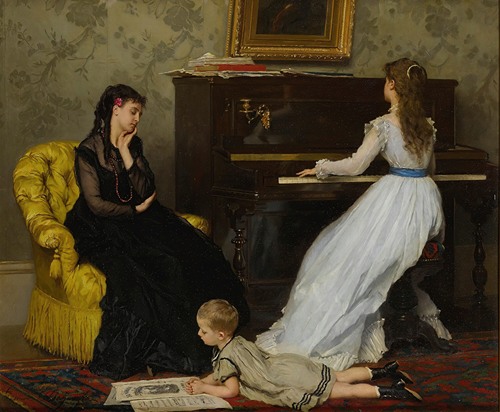
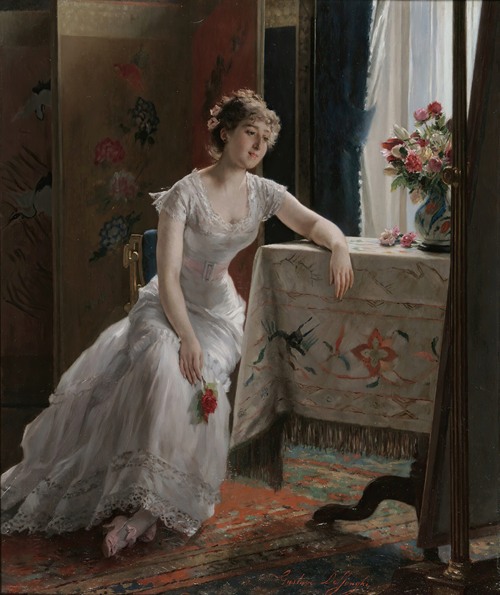
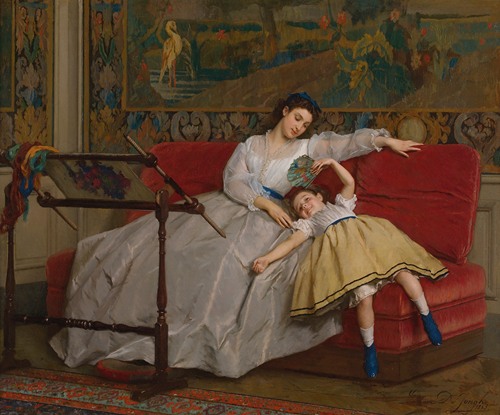


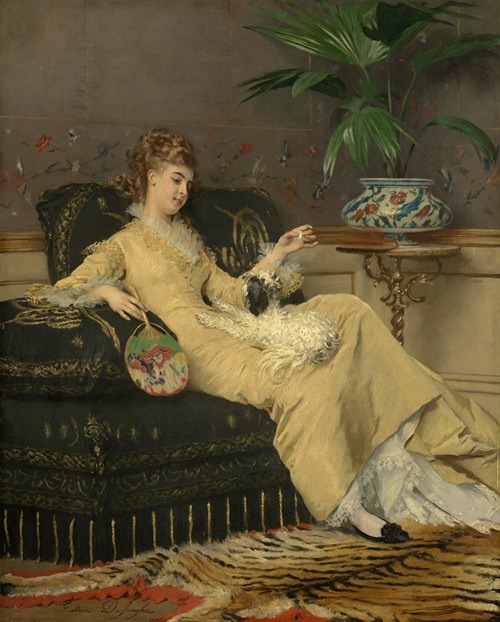
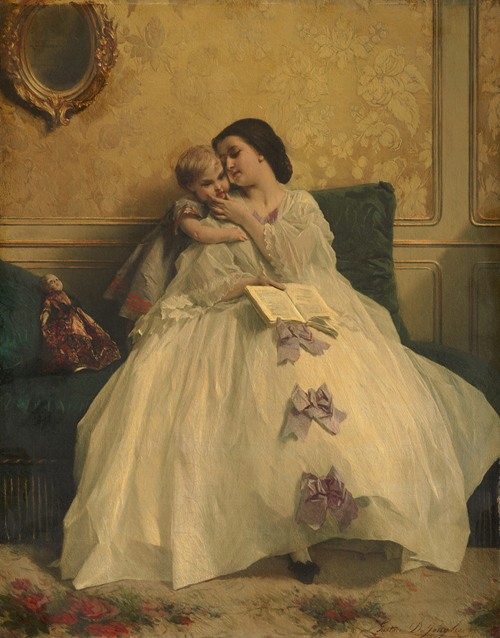
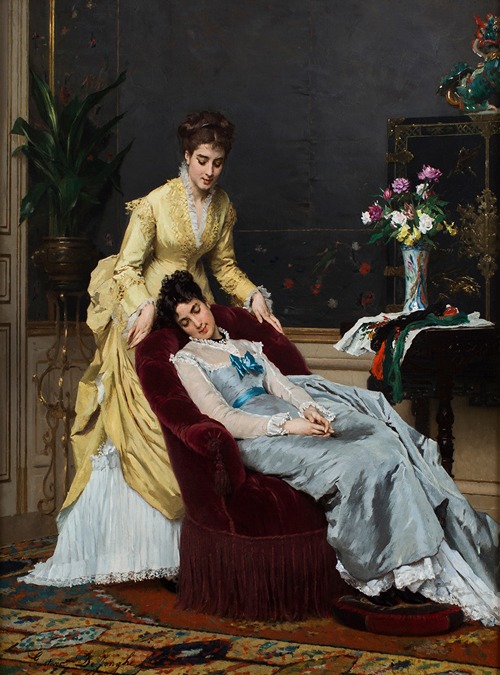
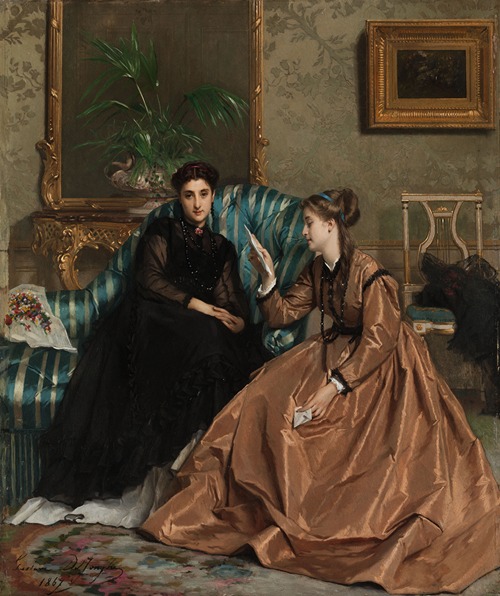
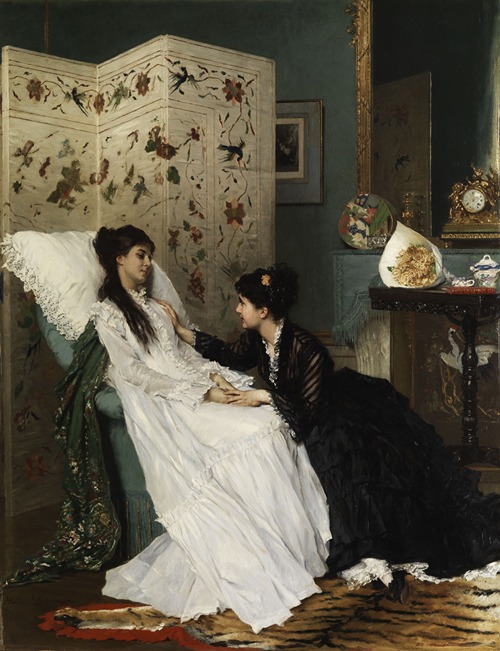
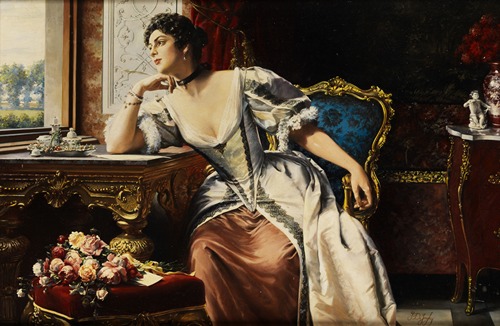
Gustave Léonard de Jonghe, Gustave Léonard De Jonghe or Gustave de Jonghe was a Flemish painter known for his glamorous society portraits and genre scenes. After training in Brussels, he started out as a painter of historical and religious subjects in a Realist style. After moving to Paris where he spent most of his active career, he became successful with his scenes of glamorous women in richly decorated interiors.
Gustave Léonard de Jonghe was born in Kortrijk as the son of the prominent landscape painter Jan Baptiste de Jonghe. He received his first art lessons from his father. He continued his studies in Brussels at the Académie Royale des Beaux-Arts where leading Belgian painter François-Joseph Navez was one of his teachers. The history painter Louis Gallait was his close friend and mentor. When de Jonghe’s father died when he was only 15 years old, his native city granted him a scholarship.
From 1848 onwards de Jonghe participated in the exhibitions of the Brussels Salon. De Jonghe emigrated to Paris and began to exhibit at the Parisian Salons in the 1850s. He became a popular painter of elegant women and group portraits of the bourgeoisie. He usually preferred interior settings, in which he represented several fashionable details of the period.
In the 1870s, the artist repeatedly shuttled between Paris and Brussels. The onset of blindness in 1882 following a cerebral haemorrhage ended his artistic career and he returned to Brussels. Leading Belgian and French artists in Paris organized a charity art sale to support the ailing artist and his family. De Jonghe died in 1893 in Antwerp where he had resided since 1884.
De Jonghe was twice awarded a medal for his work: he received in 1862 a first-class medal in Amsterdam and in 1863 a third-class medal at the Paris Salon. In 1864, Belgian King Leopold I honoured him with the Order of Leopold.













